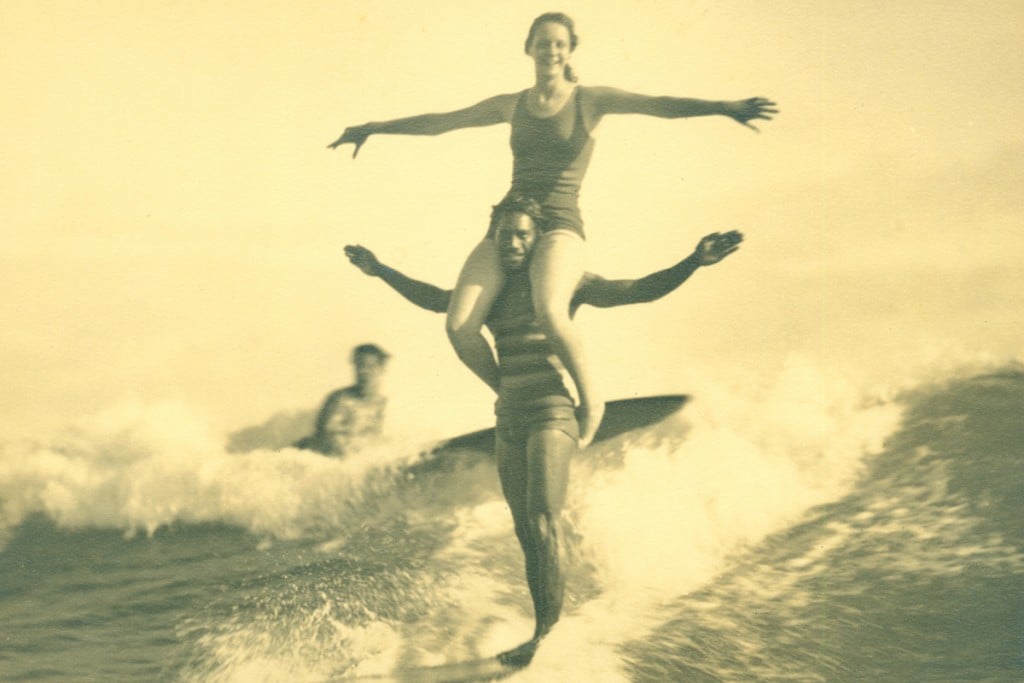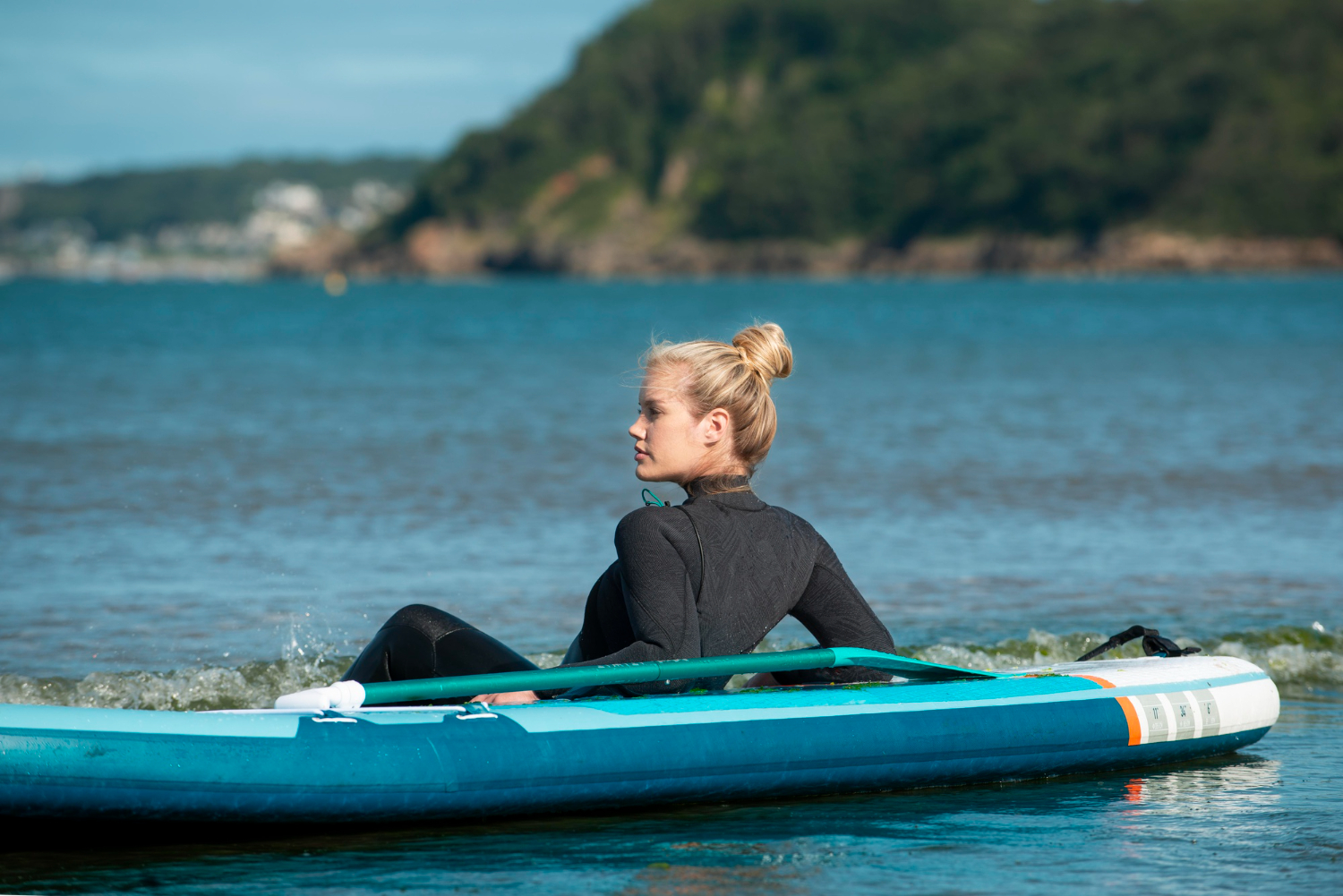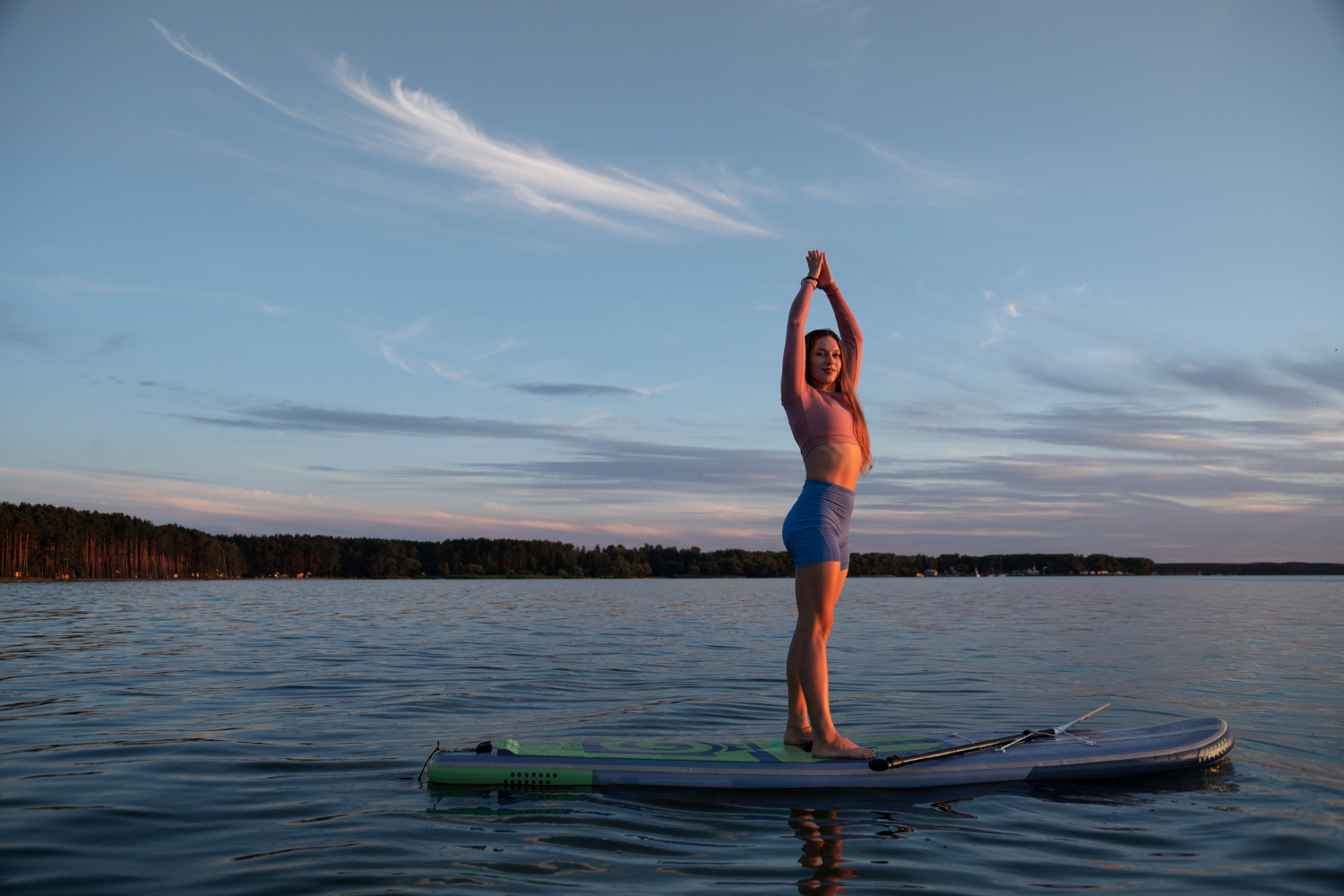Discover the Fascinating History of Stand Up Paddle through the Ages

Stand-Up Paddle Introduction
SUP Definition and Overview
Ah, the Stand-Up Paddle, or SUP, is simply magical, isn't it? Just imagine the scene: standing like an intrepid captain on his board, defying the whims of the water.
Paddle in hand, you glide across the peaceful mirror of a sleepy lake, make your way through the ever-changing course of a river, or challenge the salty waves of the immense ocean.
It's more than just a sport, it's an aquatic expedition, a quest for balance and exploration.
And what about SUP? That darling of wave and sun aficionados, well, it's not just a hobby, but a real invitation to float on the water, accessible to everyone, whether you're a pro at gliding, or simply looking for a new way to decompress over the weekend.
The charm of paddleboarding, which is a derivative of surfing, is its ability to give you a physical workout without you really noticing it - you improve your balance and musculature while clearing your mind, in total immersion with nature.
And take my word for it, there's absolutely nothing quite like the feeling of absolute serenity you get from standing in the heart of the watery expanse, paddle in hand, far from the hustle and bustle of everyday life.
Brief introduction History
Imagine for a moment the vast aquatic expanses of Polynesia, a time when Stand-Up Paddle was not yet a fashion phenomenon, but rather a vital necessity. Where fishermen once stood on huge boards, silently skimming the surface of the water for hours on end to catch their next meal.
This scene, tinged with poetry, is one that the first European explorers discovered, captivated by a tradition that skilfully blended the useful with the pleasurable, at the heart of a deeply bewitching culture.
Fast forward to the 1940s, to Hawaii, where SUP is about to undergo a revolution. The iconic Beach Boys of Waikiki, gliding between the waves, camera in hand, to capture the daring moments of ocean-defying tourists.

It was on these sun-drenched shores that SUP began its transformation from a simple subsistence tool to an emblem of leisure and aquatic escapism.
Then, as if by a leap of faith, we find ourselves projected back into the 2000s. Here, surfing icons such as Laird Hamilton take over. Laird, a new-generation surfer, was enthroned on his board in the middle of a calm sea, metamorphosing flat sea days into a new form of training, adventure and fusion with the ocean.
This is how SUP matured, becoming a sport in its own right, offering surfers a way to stay in shape and in symbiosis with the sea, even in its quiet moments away from conventional surfing.
Origins and development History
Polynesian Roots
The ancestral art of Stand-Up Paddle, or SUP, comes directly from the depths of Polynesian culture. Imagine the great kings and chiefs sailing the ocean, linking islands and atolls with nothing more than a sturdy board under their feet and a paddle in their hand.
These objects were no mere tools, they embodied prestige and authority, carved from precious koa wood.
It's not just a page of history that has been turned, but rather a tradition that has traveled through the ages to become part of the soul of Hawaiian surfing. In the process, SUP has retained its core: balance on the water, paddle in hand.

Despite the evolution of forms and techniques, this age-old practice retains an indestructible link with its illustrious past, testifying to the continuity between generations of surfers.
The Modern Era and the Hawaiian Renaissance
The beaches of Waikiki in the '40s and '50s were alive with the iconic Beach Boys, among them the legendary Duke Kahanamoku. They weren't just surfers; they were the keepers of a tradition, bringing SUP back into everyday life by standing up, paddles in hand, for a better view while teaching or capturing moments with tourists. Their flair and passion breathed new life into SUP, transforming it into a pastime enjoyed by all.

Let's move on to a new chapter, the 2000s, where Laird Hamilton, the titan of monumental waves, rewrote the rules of the game. He didn't just surf; he redefined SUP through technical innovation, with refined boards and custom-tailored paddles. Thanks to Hamilton, SUP is no longer just an ancient art, but a modern discipline open to all, offering new ways to explore the world's waters.
Global Expansion and Marketing
Since the 2010s, SUP has exploded in popularity, establishing itself as an activity of choice and a sport in its own right. Its simplicity and health benefits have won over the hearts of millions, paving the way for innovative variations on the sport: from ocean speed races to zen SUP yoga sessions.
The world has witnessed a veritable SUP revolution, transforming waterways into vibrant communities of enthusiasts. This wave has not only expanded the market with ever more specialized equipment, it has also anchored SUP in our contemporary culture, symbolizing a worldwide craze for an active lifestyle in harmony with the environment.

SUP in Culture and Society
SUP as a Social and Sports Practice
The appeal of the SUP Stand-Up Paddle lies in its universality. Children playing on the waves, adults looking for peace and quiet on the water, senior citizens in search of unrestricted movement: SUP is for everyone! Its ease of learning makes it the ideal choice for anyone wishing to discover the joys of the water, while the more experienced will find it challenging and rewarding.
As well as being a relaxing sport, SUP has also made a name for itself in the global sporting arena. There are competitions based on agility, endurance and strategy. Today, the sport is a mainstay of water sports events, attracting top athletes and thrill-seekers alike. These events, combining competition and festivities, underline SUP's growing place in the international sporting and cultural panorama.
Impact Environnemental et Durable
Sailing a Stand-Up Paddle offers much more than a simple aquatic escapade. SUP is an immersion in the beating heart of our marine environment. SUP enthusiasts have a front-row seat to the wonders and woes of the marine and underwater ecosystems, as they are confronted with the reality of pollution and the fragility of aquatic habitats. This natural proximity fosters heightened awareness and often enables them to get involved in protecting our aquatic heritage.

Conscious of its footprint, the SUP community is making significant ecological shifts. Through the adoption of sustainably designed boards and the organization of eco-friendly events, it is leading the way towards a greener practice. These efforts reflect a deep commitment to the health of our planet, embodying the spirit of SUP that is not only sporty, but also eco-responsible.
Future Perspectives and Innovations
SUP and Technology
The digital age has also transformed Stand-Up Paddling, enriching the experience for every paddler. With apps to track routes, assess performance and keep abreast of weather conditions, paddlers can now navigate with greater confidence and efficiency. These digital tools, ranging from simple apps to advanced gadgets, enable total immersion in practice, while offering valuable data for tracking personal progress.
Safety takes on a new dimension in SUP thanks to technological innovation. GPS-equipped equipment and connected watches not only measure performance, but also look after the paddler's well-being, offering features such as SOS alerts and vital signs monitoring. At the same time, advances in board design are making the sport more accessible and safer for all, marking a notable evolution in SUP practice.

We can also mention inflatable technology. Many manufacturers now offer inflatable paddles that you can simply carry in a bag. This is a real step forward, as it opens up stand-up paddling to a whole new audience.`
SUP and the Trends of Tomorrow
Stand-Up Paddle extends beyond simple sailing, blending with activities such as yoga and fishing to create unique experiences. SUP Yoga brings a touch of tranquility and balance to the water, transforming a regular workout into a meditative practice in the midst of nature.
On the other hand, SUP Fishing opens up new perspectives for anglers, combining sport and leisure in a tranquil, immersive experience. These innovations illustrate SUP's ability to reinvent itself and adapt to different needs and passions.

Stand-Up Paddle's drive towards Olympic recognition symbolizes its rise as a major sporting discipline. With a growing community and global appeal, SUP could well find its place in the Olympic arena, offering a platform for competition and international recognition.
Its potential inclusion in the Games would mark a significant step forward, celebrating not only the sport itself but also the diversity and community spirit it embodies.
Conclusion
The practice of Stand-Up Paddle (SUP) is much more than an aquatic activity, it weaves a continuous thread between millennia-old customs and contemporary movements. This journey through time and the evolution of SUP reveals how an ancient rite of Polynesian culture has metamorphosed into a global craze, touching people of all backgrounds and generations.
SUP transcends the sporting dimension to become a veritable ode to man's intimate relationship with water and nature. It promotes a balanced lifestyle and a sincere appreciation of our surroundings. It embodies the perfect union of tradition, sport and ecology, demonstrating how human practices can be aligned in perfect harmony with our ecosystem.
SUP is a call to adventure, connection and care for our planet, while looking after your own health. Whether you're looking for tranquility on the water or a new physical challenge, SUP can provide it. So grab your paddles and dive into the transformative adventure of SUP. Join this family committed to well-being, adventure and the preservation of our marine treasures.